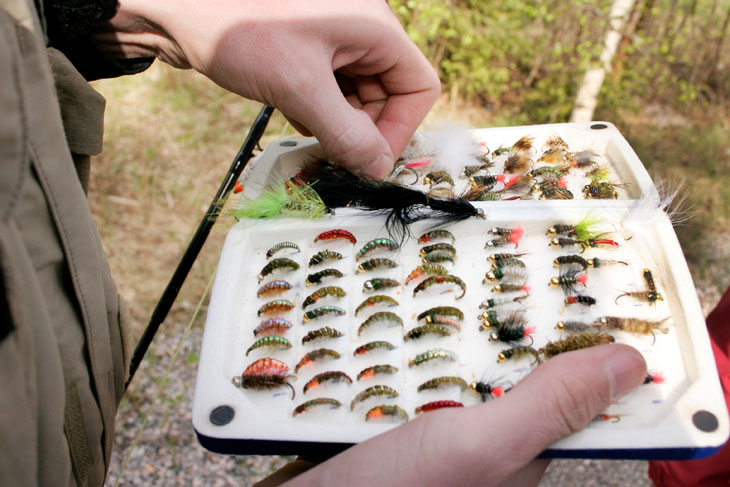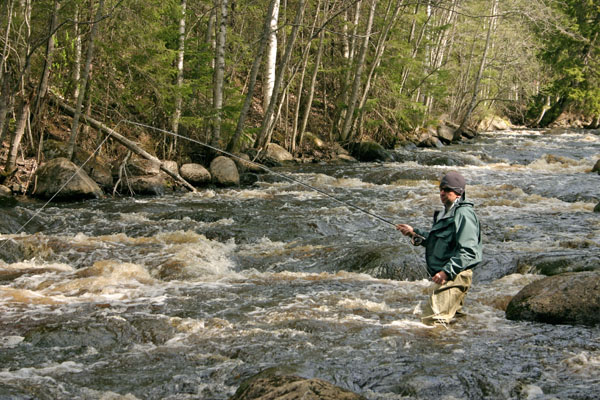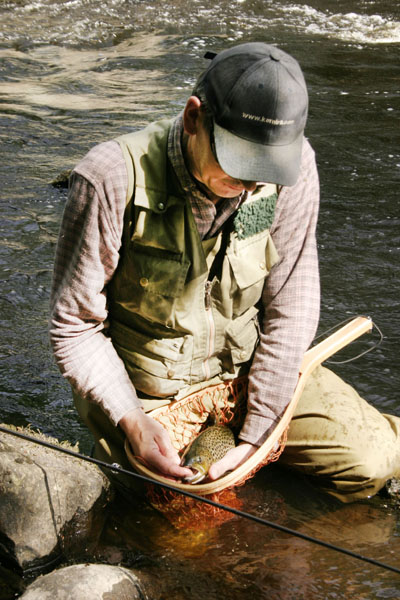|
|
||
 |
||
|
Kotalan Kosket Rapids |
||
Fish bite on rapids |
|
|
||
 |
||
|
Kotalan Kosket Rapids |
||
Fish bite on rapids |
| There are numerous interesting rapid-flowing waters in the Tampere Region (Pirkanmaa), whose banks provide a good place for rapids fishing. The most accessible sites flow right in the heart of the city, but there are also wilderness rivers to suit all tastes. |
 |
| Rapids fishing tackle |
|
A rapids angler can usually manage with a
lightweight 5–7 foot rod with recommended lures in the 2–15 gram class. The
most reliable choice of reel is a small spinning reel and the line should be
about 0.20–0.25 mm. The thinner the line you dare to use, the longer your
casts will carry and the livelier the lure will swim. |
 |
| Rapids angler’s catch |
| The main targets
on rapids are salmonoids, usually rainbow trout and trout weighing about
0.5–2 kilos. Nowadays, most catches are fish planted at angling size, since
the natural reproduction of trout is not sufficient to maintain a catchable
stock. Rainbow trout in turn will not reproduce in Finnish conditions at
all. Nowadays, grayling is also among the possible catches along the rapids in the Tampere Region. You may even find the fiercely fighting grayling, usually about 300–500 grams, on the Tammerkoski Rapids, but there is a better chance of this on the Kotalan Kosket Rapids. The good catching season extends from June to September. Whitefish are found on rapids from time to time. On the Tammerkoski Rapids, for example, a great whitefish season takes place from October to December, when catches may be first class. Whitefish will most reliably take small flies. In addition to salmonoids, the regular inhabitants of rapids include (especially in warm waters) perch, pike, roach and bleak. The Herraskoski, Vilppulankoski and Kotalan Kosket Rapids, for example, also provide good opportunities to catch good size ide (as much as 2 kg). On the Kuokkalankoski in Lempäälä, you can test your skills against asp, which may grow to weigh as much as 5 kg. |
 |
| Some catching tips | |
| - Observe the
rapids; fish often reveal themselves by popping above the surface. Cast your
lure a few metres away from where a fish lies and let the current push it to
the right spot. - Do not reel in too quickly. The pressure of the stream generates the swimming movement of the lure, which means that reeling may not necessarily be required at all. - It is often important to get the lure to move close to the bottom. - Mind the bottom snags, since it is almost impossible to retrieve a lure wedged in a rock hole in the rapids. - Keep changing your casting spot frequently, let the fish ‘calm down’ now and then. |
|
Jari Tuiskunen |
|